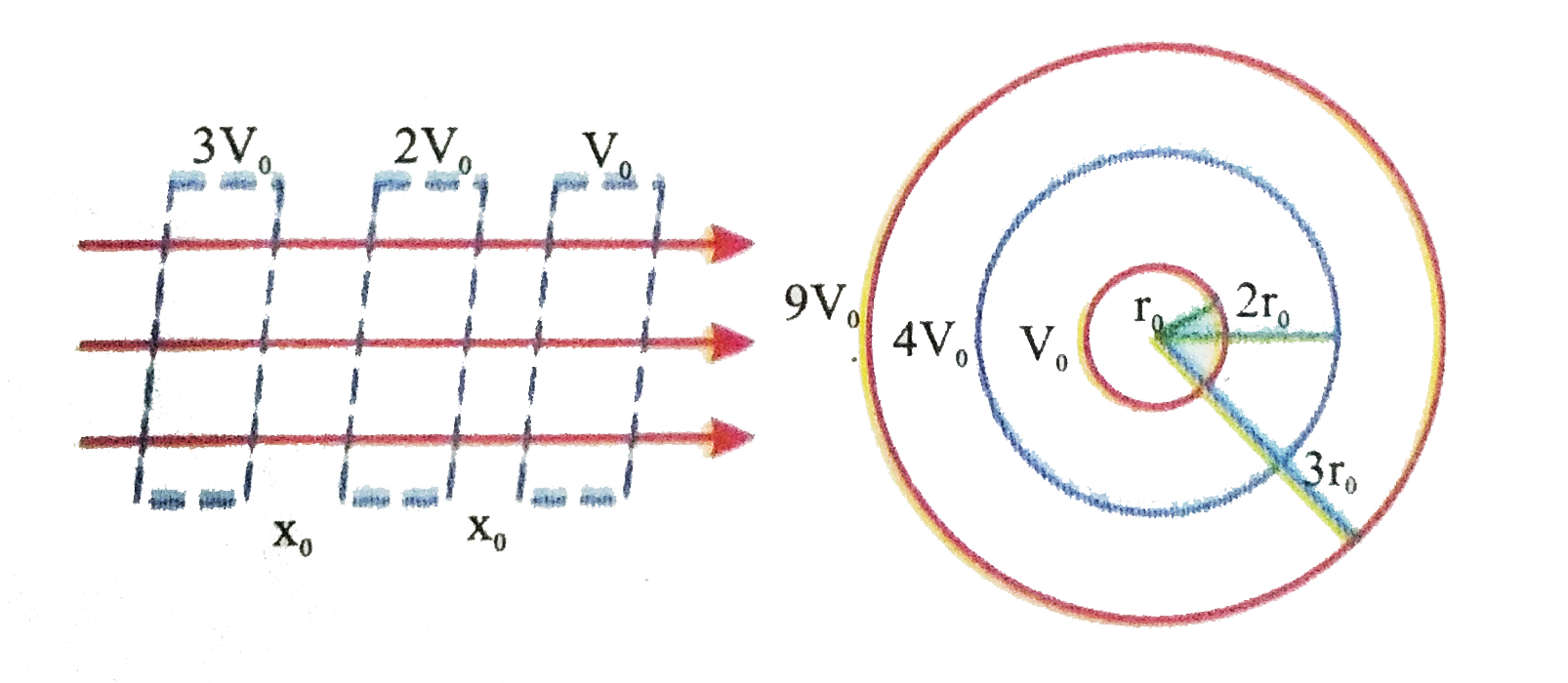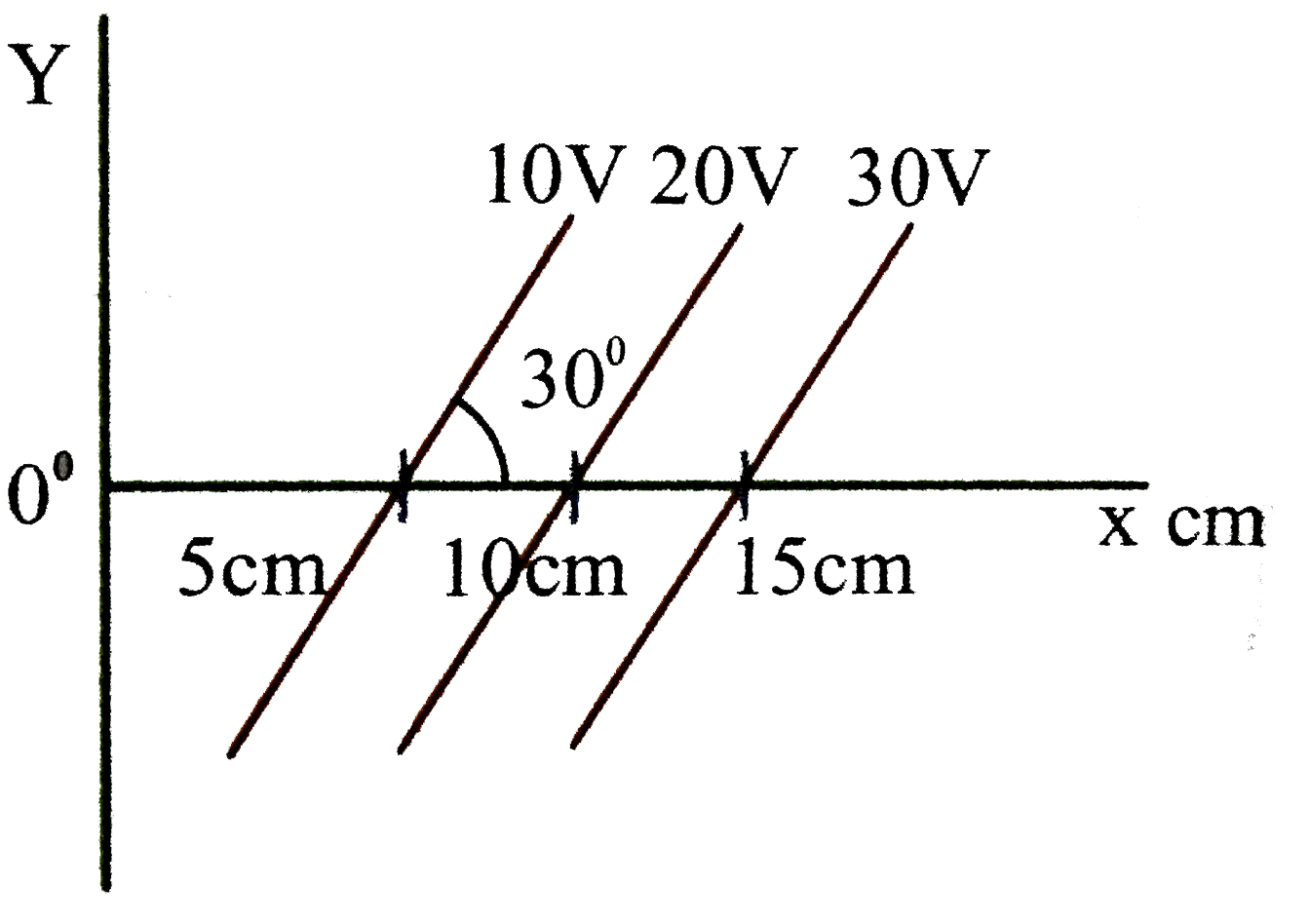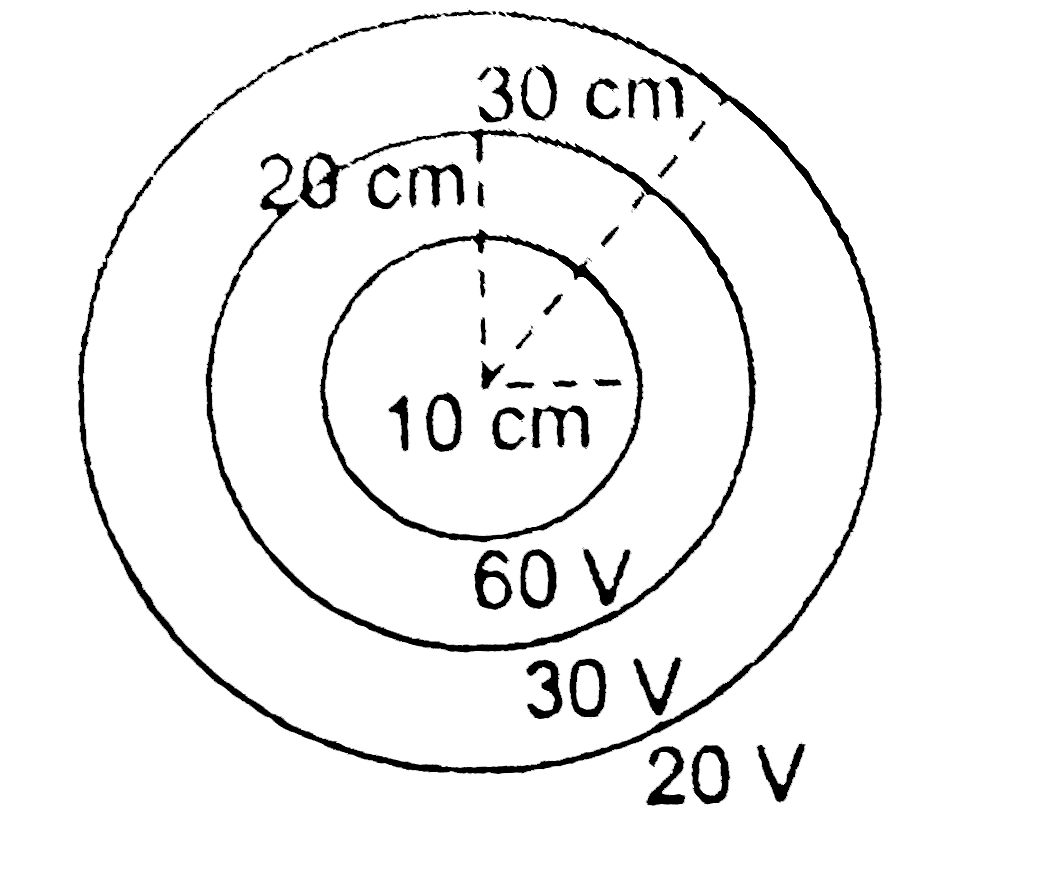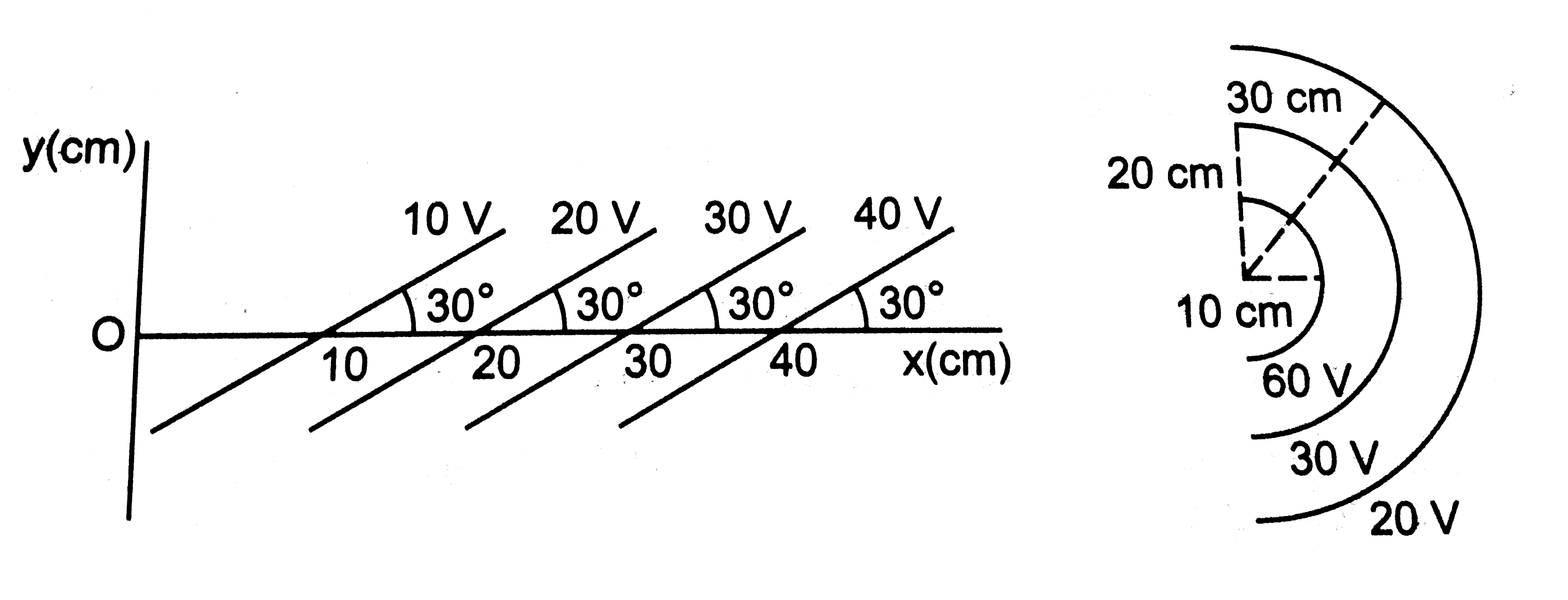Some equipotential surfaces are shown in the figure below, what can you say about the magnitude and the direction of the electric field ?

First we will find the direction of the →E noting that the →E lines are always perpendicular to the local equipotential surfaces and points in that direction in which the potential is decreasing . So it will be as shown below.

Note that we have drawn the →E lines perpendicular to all equipotential surface and it si pointing in that direction in which the potential is decreasing. so the total angle →E is making with the positve x-axis is 120∘ as shown . .

Now, how to calculate the magnitude of the electric field for this we need to jump from one equipotential surface to another through shortest (perpendicular ) distance
then calculate, E = Change in potentialdistance travelled
Let us suppose we are jumping from 20 V line to 10V line from B to A. note that the BA line is the shortest length between the two equipotential surface . the potential difference between the two lines is (20 V-10 V) = 10 volt now, calculate the length AB = 10sin 30∘ cm = 5 cm = 5×10−2 m
Therefore, E =10V5×10−2m = 200 [ V/m]
Hence, the complete answer is that the →E has the value 200 V/m and makes 120∘ with positve x-axis.
Topper's Solved these Questions
- ELECTROSTATIC POTENTIAL AND CAPACITANCE BOOK - AAKASH INSTITUTECHAPTER - ELECTROSTATIC POTENTIAL AND CAPACITANCE EXERCISE - TRY YOURSELF
110 Videos
- ELECTROSTATIC POTENTIAL AND CAPACITANCE BOOK - AAKASH INSTITUTECHAPTER - ELECTROSTATIC POTENTIAL AND CAPACITANCE EXERCISE - ASSIGNMENT (SECTION-A) Objective Type Questions (Only one answer)
47 Videos
- ELECTROMAGNETIC WAVESBOOK - AAKASH INSTITUTECHAPTER - ELECTROMAGNETIC WAVESEXERCISE - ASSIGNMENT SECTION - D Assertion-Reason Type Questions
25 Videos
- GRAVITATION BOOK - AAKASH INSTITUTECHAPTER - GRAVITATION EXERCISE - ASSIGNMENT SECTION - D (ASSERTION-REASON TYPE QUESTIONS)
16 Videos
Similar Questions
Knowledge Check
Equipotential sufaces are shown in figure a and b the field in
 Aa is uniform onlyBb is uniform onlyCa and b is uniformDboth are nonuniform
Aa is uniform onlyBb is uniform onlyCa and b is uniformDboth are nonuniformWhen MP is zero, what can you say about TP?
ATP is increasingBTP is maximumCTP is fallingDNone of theseSome equipotential surfaces are shown in figure .The electric filed strength is
 A100V/m along x-axisB100v/m along y-axisC400V/m at an angle 120∘ with x-axisD400√3V/m an angle 120∘ with x-axis
A100V/m along x-axisB100v/m along y-axisC400V/m at an angle 120∘ with x-axisD400√3V/m an angle 120∘ with x-axis
Some equi-potential surfaces are shown in figure. What can you say about the magnitude and the direction of the electric field ?

View SolutionWhen MP is zero, what can you say about TP ?
View SolutionWhen MP is zero, what can you say about TP?
View SolutionSome equipotential surface are shown in the figure. Find the value of electric field :-

View SolutionOn the basis of your understanding of the following paragraph and the related studied concepts.
An equipotential surface is a surface with a constant value of electric potential at all points on the surface. The component of electric field parallel to an equipotential surface is zero, as the potential does not change in this direction. Thus, the electric field is perpendicular to the equipotential surface at each point of the surface. Further, say the direction of electric field electrical potential gradually fall with distance.
Four equipotential surfaces are shown in the adjoining figure. Find the magnitude and direaction of the electric field.

View Solution


